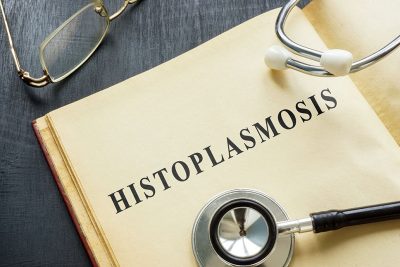
The Expanding Venues of Histoplasmosis and Blastomycosis in the United States
November 1, 2025
By Stan Deresinski, MD, FACP, FIDSA
Synopsis: The occurrence of new cases of both histoplasmosis and blastomycosis is increasing in the United States, including in areas not generally considered endemic.
Source: Bartels JGE, Camponuri SK, Snow TT, et al. Updating the epidemiology of blastomycosis and histoplasmosis in the United States, using national electronic health record data, 2013-2023. J Infect Dis. 2025; Sep 10:jiaf472. doi: 10.1093/infdis/jiaf472. [Online ahead of print].
Bartels and colleagues examined a large national database of 1.6 billion healthcare encounters to characterize the recent (2013-2023) epidemiology of incident histoplasmosis and blastomycosis in the United States. They identified 8,313 and 1,424 case-patients of histoplasmosis and blastomycosis, respectively. While females accounted for a bare majority (51.7%) of the former, males accounted for 69.3% of blastomycosis case patients. The majority were ≥ 55 years of age and were non-Hispanic whites. The Ohio Valley was the home of 52.7% of cases of histoplasmosis and 40.5% of blastomycosis cases.
The national incidence rate of blastomycosis per 100,000 person years (p-y) increased from 0.4 in 2013 to 1.3 in 2023 — a 2.4-fold increase in adjusted rates. Although the incidence was observed in all regions of the country, it was greatest in the Upper Midwest, going from 0.5 to 6.8 cases per 100,000 p-y.
Histoplasmosis incidence increased from 2.9 to 6.5 cases per 100,000 p-y, a 1.9-fold adjusted increase from over the decade, with the highest rates in most years in the Ohio Valley but with similarly high rates in the Upper Midwest. However, the greatest increase was in the Northern Rockies and Plains.
Commentary
While the Mississippi and Ohio River valleys are rightly considered hotbeds of these endemic fungal infections, this study demonstrates their occurrence well beyond these regions. In fact, histoplasmosis is found in many regions of the world. The acquistion of fungal infections outside their usual endemic areas was discussed a decade ago.1 As an example, I once had a patient with Histoplasma endocarditis that was almost certainly acquired in the Central Valley of California — coccidioidomycosis country.2
The lesson to clinicians is to be alert to endemic fungal infections in your patients and be aware of available diagnostic tests. This would be true even in the absence of this epidemiological data, both because of patient travel to endemic areas as well as the risk of late relapse of earlier unrecognized infection, often as the result of immunosuppressive therapy, such as the use of corticosteroids for various illnesses.
Stan Deresinski, MD, FACP, FIDSA, is Clinical Professor of Medicine, Stanford University.
References
1. Benedict K, Thompson GR 3rd, Deresinski S, Chiller T. Mycotic infections acquired outside areas of known endemicity, United States. Emerg Infect Dis. 2015;21(11):1935-1941.
2. Riddell J IV, Kauffman CA, Smith JA, et al. Histoplasma capsulatum endocarditis: Multicenter case series with review of current diagnostic techniques and treatment. Medicine. 2014;93:186-193.